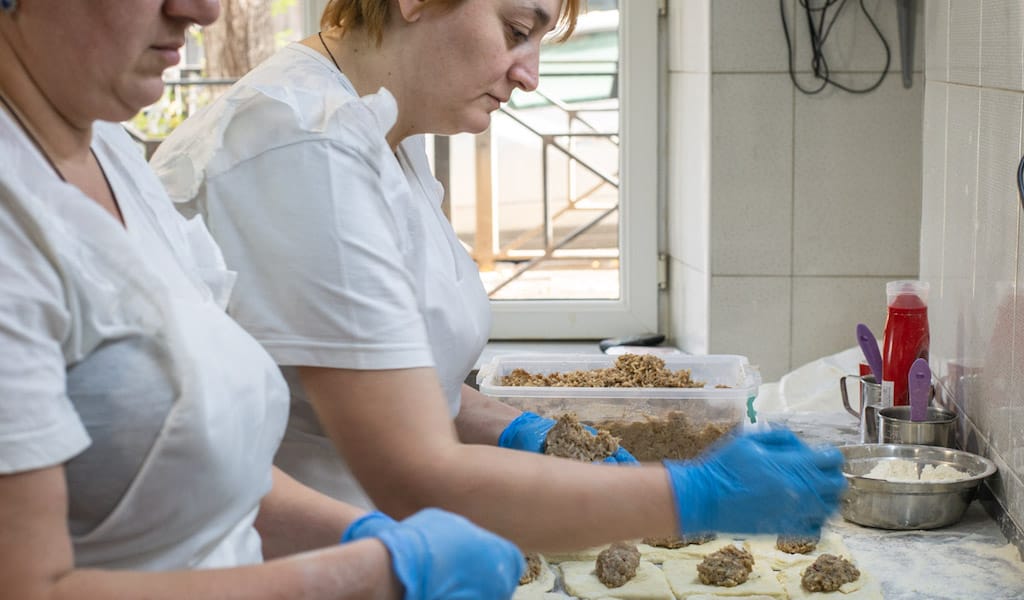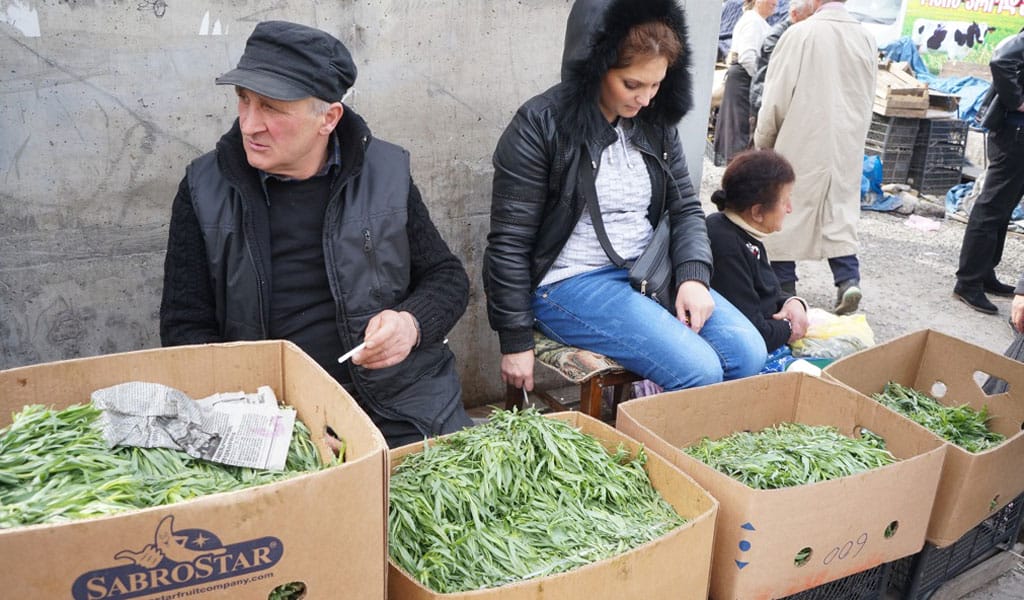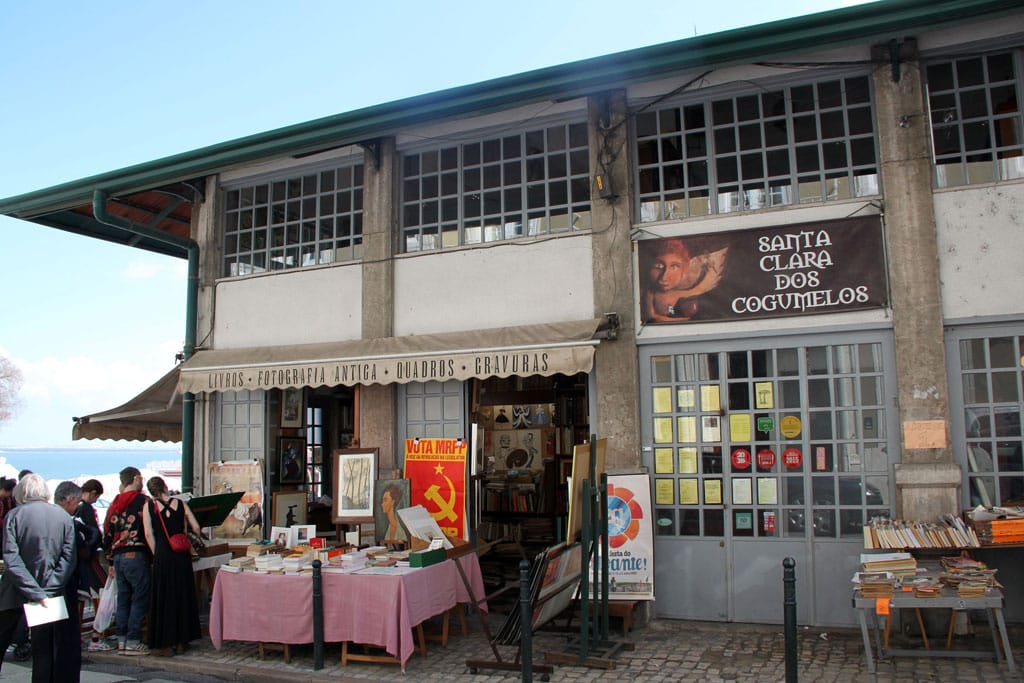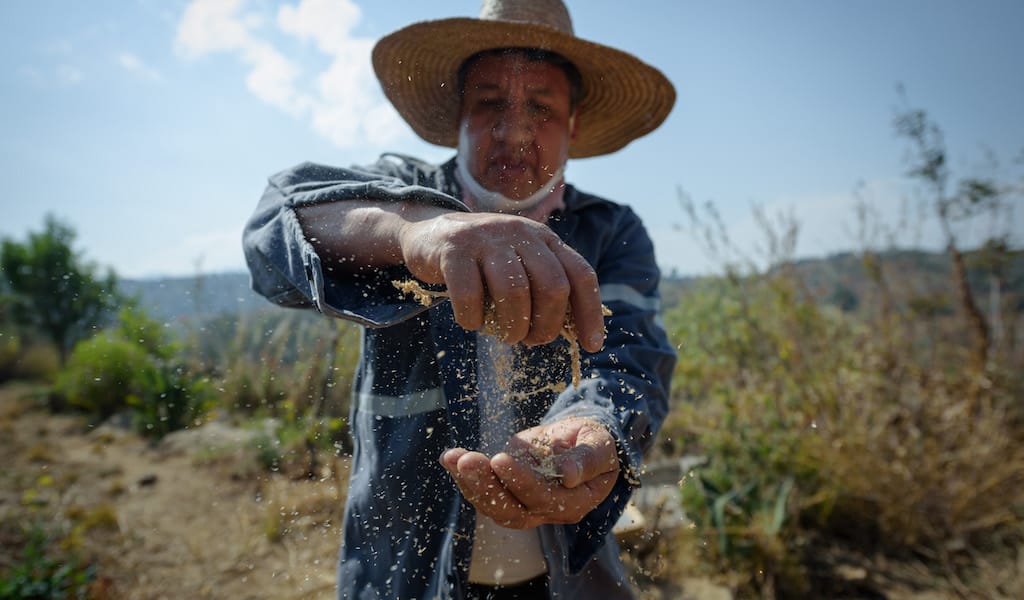You are motionless, stuck in a traffic jam after a long day at work while your stomach growls. You know the rest of the family will be hungry when you get home and that the fridge is empty and sad. Shopping and cooking is out of the question, so you turn onto a Vera side street, zig-zag through one-way lanes to Tatishvili Street, double park, and run into a tiny gastronomic oasis that has been saving lives like yours for nearly a decade. Its name is Tartan.
Located in a step-down ground-floor apartment, takeout cafeterias don’t get homier than this. The front room is taken up with a long counter of refrigerated display cases half filled with enough ready-made dishes to lay down a feast when you get home. The other half offers a diabetic’s nightmare of cake selections that make old cavities ache just browsing through the glass. Two small four-top booths in the corner provide the only seating for those who can’t wait until they get home to eat.
There are other cafeterias in the city that offer pre-cooked meals by weight but Tartan is no mere takeaway. It is a neighborhood institution dedicated to preparing homemade food with a grandmother’s touch, where quality and consistency are taken seriously.

The kitchen is segregated by task throughout the rest of the apartment’s rooms, which are decked out in gleaming stainless steel counters, sinks and shelves – khachapuris and stuffed breads, hot food, salad prep, and storage. Meanwhile, desserts are baked in a separate space across the street.
“We are the customer,” says co-owner Julia Chachiashvili, who also holds a 9-5 office job and has no time to cook, like many of her clients.
Her partners, Nana Zurabashvili and Zaza Tsibadze, manage the daily operations. Fifteen years ago, they opened a neighborhood grocery together. Their winning partnership resulted in Tartan, a busy eatery for working people.
“It is a two-family business,” Julia says proudly. Most of the staff have been here since day one, bringing their own family recipes, some passed down generations on yellowing notepaper, to the menu.
“Everything here is homemade. It is different than what you get at restaurants,” Julia explains.
In fact, some of these grandmother standards are rarely found in Georgian restaurants.
In fact, some of these grandmother standards are rarely found in Georgian restaurants. We have yet to come across anything close to their tender chicken roulade, which is packed with a buttery filling of garlic, onion and red pepper. Dolma are stuffed grape leaves by most standards, but at Tartan they are actually Slavic golubki – cabbage leaves heartily stuffed with meat and rice.
Cabbage also figures in a crispy oil and vinegar coleslaw. Other fresh salads include wooden mushroom with white onion and fresh herbs, and pkhali with ekala – a wild green Tartan freeze-dries to use throughout most of the year. More conventional is the shredded chicken salad, which holds back on the mayo drenching that’s more commonly used.
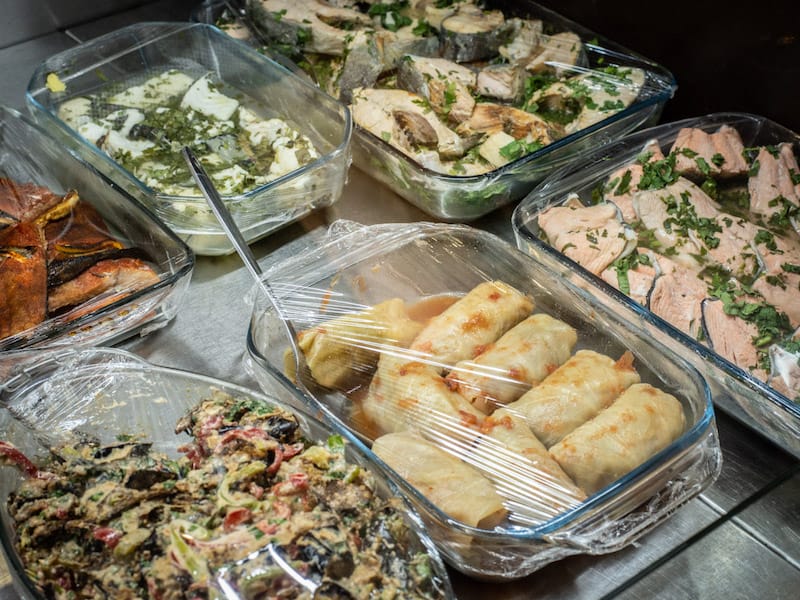
Cakes and pastries are another Tartan specialty. Georgia is not known for its desserts and few bakeries seem to have the knack of making the kinds of cakes you want to come back for. Powdered milk plays heavily in most pastry kitchens, but Mr. Tsibadze gets fresh milk daily from his neighbor’s cows. It is used for Bird’s Milk cake, a seductively light mousse of whipped sour cream topped in a perfect layer of chocolate. Julia recommends the “Snickers” cake, a toothsome combination of peanuts and chocolate. She blames desserts like these for an extra 10 kilos she didn’t have before opening the cafeteria.
Five bakers work a ten-hour shift to make khachapuri and other stuffed breads like lobiani (bean), mushroom, and tarragon and rice. The layered penovani khachapuri might clog a few arteries, but the way it melts in your mouth is worth the risk of a stroke.
The only problem with Tartan is its own good fortune. Being popular means being busy, and in Tartan’s case that means customers must wait in line. Georgians do not queue well. “Why should I wait behind someone ordering a family meal when all I want is a single khachapuri?” is a refrain we’ve heard here. There is some line jumping but your perseverance will be rewarded, even if all you’re waiting for is an 80-tetri (25-cent) lobiani bun.
The tendency for many entrepreneurs who achieve such success is to expand and be a chain venture, but Julia and her partners are not interested. “Running a place like this is really hard work. It runs smoothly,” she says before greeting a regular customer with a smile. “Why should we over-extend ourselves?”
This article was originally published on November 18, 2019.
 April 26, 2023 Spring in Tbilisi
April 26, 2023 Spring in Tbilisi
At the cusp of winter’s end, men across Georgia balance on wobbly ladders and trim their […] Posted in Tbilisi April 21, 2016 Santa Clara dos Cogumelos
April 21, 2016 Santa Clara dos Cogumelos
In the heart of Alfama’s historic flea market is a surprise: Lisbon has a small […] Posted in Lisbon February 4, 2021 Super Seed
February 4, 2021 Super Seed
Nodding to a table laid with bars of alegria, rainbow-colored obleas, and packages of […] Posted in Mexico City
Published on June 24, 2021
Related stories
The market stalls are overflowing with spring bounty; join our tour and check it out.
April 26, 2023
TbilisiAt the cusp of winter’s end, men across Georgia balance on wobbly ladders and trim their grapevines. The clippings will be used later for baking bread in traditional tone ovens and for roasting mtsvadi, skewered chunks of pork, on the embers. Only after the trimming is completed throughout the land is springtime allowed to arrive.…
April 21, 2016
LisbonIn the heart of Alfama’s historic flea market is a surprise: Lisbon has a small restaurant dedicated entirely to mushrooms. Located inside the charming old market building from where there is an excellent view over the Tagus river, Santa Clara dos Cogumelos (Saint Clara of Mushrooms) is a very peculiar eatery: from starter to finish,…
February 4, 2021
Mexico CityNodding to a table laid with bars of alegria, rainbow-colored obleas, and packages of churros and chicharrón made with amaranth flour, Alma Rocha says she can remember her grandmother making sweets from amaranth seed, but nothing like the repertoire that she and her husband, Arturo, have now. Everything is shiny and neatly packaged below the…







































